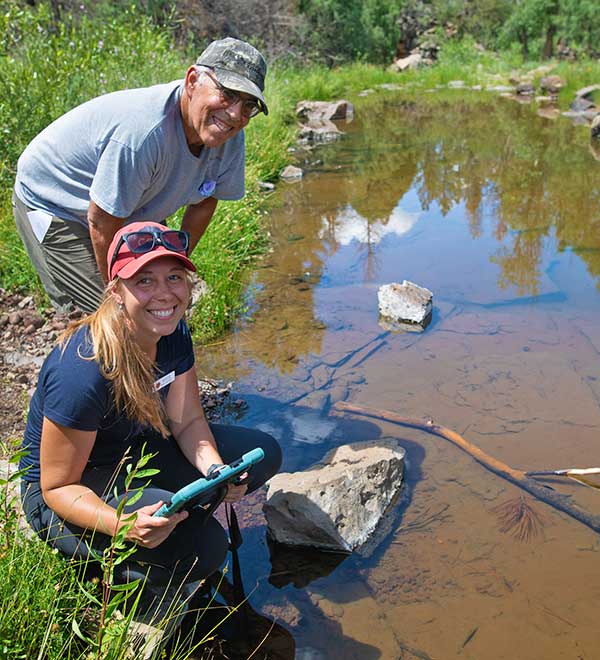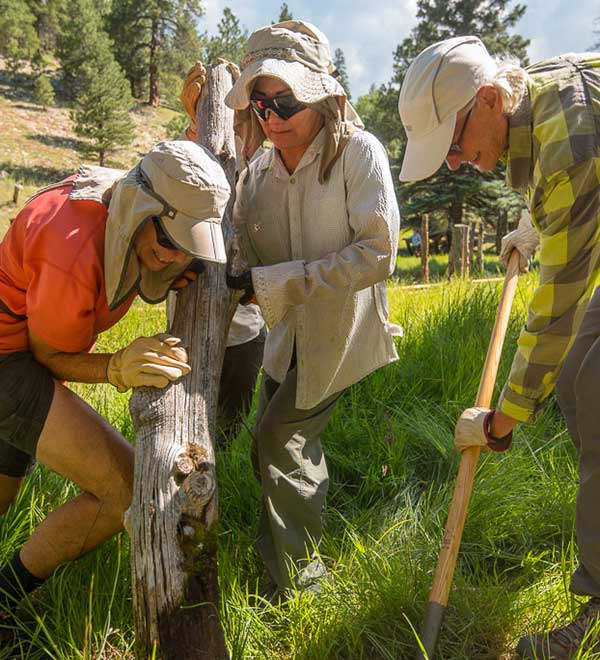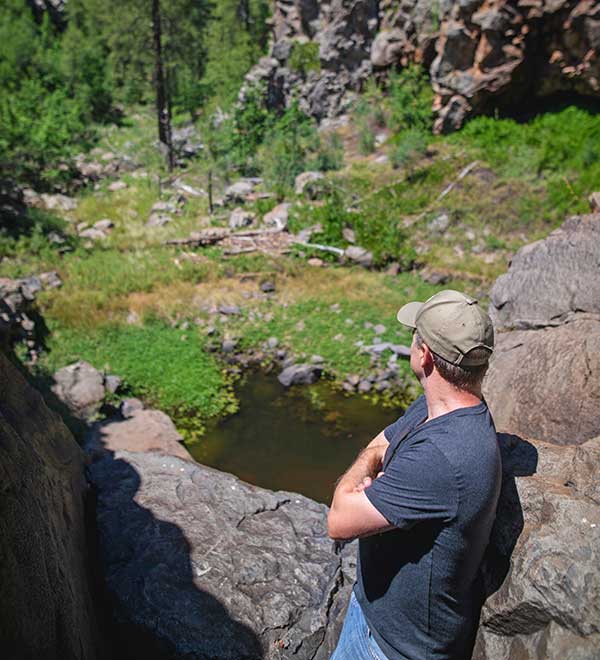The Colorado Plateau is dry — you can see it in the parched landscapes and feel it in your cracked skin. But look a little closer and you find rare pockets of water where willows grow, bobcats drink, and birds feed.
We work with volunteers to understand how wildlife and plants use springs and find ways to restore these precious desert watering holes. From studying water quality, to planting native willows, to building fences, we aim to balance the needs of plants, animals, people, and communities. After all, water is life.

Volunteers visit springs to document water quality and flow, signs of wildlife, human infrastructure, and native and non-native plants. These observations help inform appropriate restoration strategies for each site. We share the data we collect with land management agencies, like the Forest Service and Bureau of Land Management, so they can best protect water sources on our public lands.

The specific approach depends on the spring. Sometimes we build fences to protect fragile wetlands from the heavy feet of cattle; other times we pull weeds and plant native willows.

We check on our sites to make sure the plants, animals, and ecosystems are thriving. If not, we tweak our restoration plans accordingly. Wildlife cameras have shown coyotes, pronghorn, and jackrabbits drinking from restored waters.
Springs have been sustaining plants, animals, and people for millennia. These watering holes are intertwined with clan names, origin stories, and cultures of Native American tribes in the region. Springs also support many endangered species.
From groundwater pumping, to mining, to livestock grazing, we place huge demands on our springs. Add in climate change and already scarce water sources become even scarcer.
We place cameras at springs we’ve restored to see what critters are using the waters we’ve brought back to life. From mice, to birds, to bobcats, we’re learning about wildlife that depend on this landscape. It’s imperative that we help protect springs when and where we can.
Springs are the lifeblood of the forests, canyons, and communities of the arid Southwest.
Read MoreVolunteers do the heavy lifting so native plants and wildlife have healthy water sources in the forest.
Read MoreTurns out protecting Grand Canyon springs for animals like bobcats, hawks, and bighorn sheep, requires some heavy lifting.
Read More